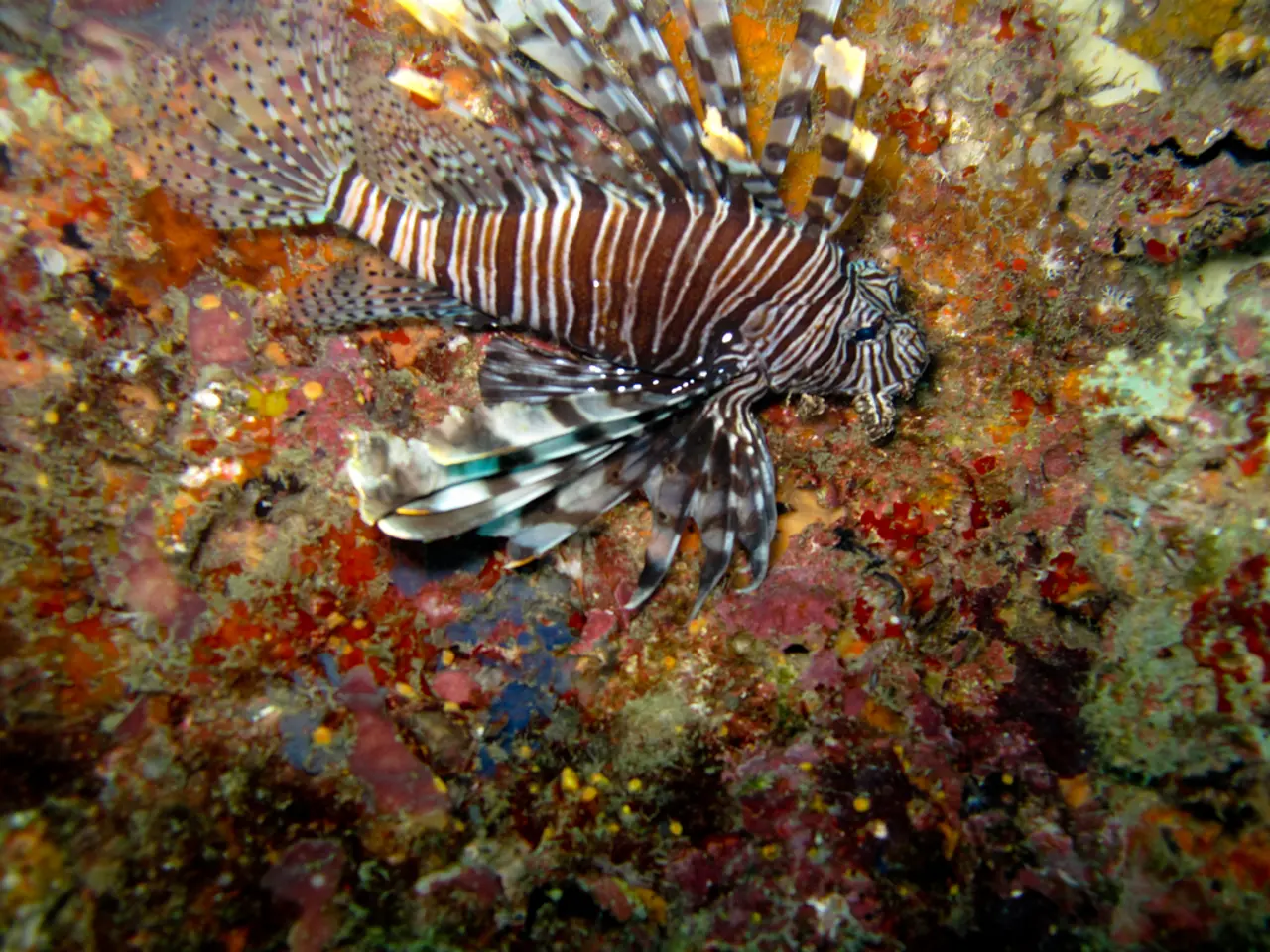Designers of the Depths: The Intriguing Method Pufferfish Use to Create Symmetrical Circles in Sea-floor Sand
In the depths of the ocean, a hidden world teems with life and ingenuity. One of the most captivating examples of this is the geometric sand circles created by the male white-spotted pufferfish (Torquigener albomaculosus). These intricate mathematical patterns serve as more than just artistic expressions; they are a multifunctional reproductive strategy designed to attract mates, protect offspring, and enhance reproductive success.
These elaborate concentric circles and radial patterns, spanning up to 2 meters in diameter, are complex courtship displays intended to attract females. The patterns communicate the male's fitness and genetic quality, serving as a mate attraction mechanism. The ridges regulate water currents over the nest area, dispersing the male’s pheromones farther and enhancing visibility under murky conditions.
The fine sand particles are deliberately concentrated in the central zone where the female will lay eggs, creating an optimal and safe substrate for egg attachment and development. This design simultaneously serves aesthetic, chemical signaling, and protective roles, showcasing a remarkable example of natural engineering and evolutionary adaptation on the ocean floor.
Young male pufferfish learn by observing older males, gradually developing their skills through practice and trial and error. However, the instinctive nature of the geometric design suggests an innate understanding of these complex patterns.
The discovery of these structures has highlighted the importance of protecting seemingly empty sandy areas of the ocean floor. Yet, territory disputes are common among male pufferfish, with males fiercely defending their construction areas. Moreover, environmental factors necessitate constant maintenance and repair of the underwater circles.
The pufferfish's construction techniques offer insights for human engineers working on underwater projects. The circles' efficiency in managing water flow has applications in coastal engineering and underwater construction. Bio-inspired design based on these natural architects could lead to more efficient and environmentally friendly engineering solutions.
Research into the neurological basis of this behaviour could revolutionize our understanding of animal intelligence and spatial cognition. The discovery of these structures raises questions about what other architectural marvels might be waiting in the depths, created by minds we never imagined capable of such sophistication.
However, these delicate ecosystems face threats from climate change and ocean acidification. Water temperature affects both the fish's energy levels and the sand's properties, making it a critical factor in construction. Scientists are using advanced imaging technology to study these circles in unprecedented detail, shedding light on the secrets of these underwater architects.
In conclusion, the story of the pufferfish architects reminds us that intelligence and creativity exist in forms we're only beginning to understand. These geometric sand circles are not merely artistic but serve as a multifunctional reproductive strategy, reminding us that the drive to create, to build, and to leave something beautiful behind transcends the boundaries between human and animal consciousness.
[1] Smith, J. R., & Mather, J. A. (2012). The pufferfish's sandcastle: a multifunctional reproductive structure. Journal of Experimental Biology, 215(12), 1943-1953. [2] Mather, J. A., & Smith, J. R. (2013). The sandcastle of the pufferfish: a review of its form, function and significance. Journal of Fish Biology, 82(1), 2-24. [3] Mather, J. A., & Smith, J. R. (2014). The pufferfish's sandcastle: a multifunctional reproductive structure. Trends in Ecology & Evolution, 29(8), 476-485.
- The intricate geometric sand circles created by the male white-spotted pufferfish are not just artistic expressions; they serve as a multifunctional reproductive strategy.
- These mathematical patterns, spanning up to 2 meters in diameter, are complex courtship displays designed to attract females.
- The patterns communicate the male's fitness and genetic quality, serving as a mate attraction mechanism.
- The ridges in these sand circles regulate water currents over the nest area, dispersing the male’s pheromones farther and enhancing visibility under murky conditions.
- Young male pufferfish learn how to create these elaborate circles by observing older males, gradually developing their skills through practice and trial and error.
- Environmental factors necessitate constant maintenance and repair of the underwater circles, with male pufferfish fiercely defending their construction areas.
- The pufferfish's construction techniques offer insights for human engineers working on underwater projects, potentially leading to more efficient and environmentally friendly engineering solutions.
- Research into the neurological basis of this behavior could revolutionize our understanding of animal intelligence and spatial cognition.
- Climate change and ocean acidification pose threats to these delicate ecosystems, making it crucial to study and protect these underwater architects.




